By John Walker
By mid-afternoon on September 7, 1812, Russian troops had lost control of the earthworks on their left flank at Borodino. The defensive position known as the Bagration fleches had changed hands multiple times over the course of the savage fighting throughout the day.
French Emperor Napoleon’s Grand Armée and Russian Tsar Alexander’s Imperial Army were engaged in a titanic struggle on the road to Moscow in which approximately 250,000 men were crowded into a three-square-mile area along the Kolocha River. The compact area had been transformed from peaceful rural pastureland into a gruesome landscape in which thousands of dead and wounded soldiers lay amid a sea of dead horses and shattered equipment.
The linchpin of the Russian defense was the Great Redoubt, which dominated the center of the Imperial Army’s position and remained in Russian hands. If the French could seize the strongpoint, it would put them in a position to pierce the Russian line and destroy Field Marshal Prince Mikhail Kutusov’s army.
After two decades of war in which France had gone from a nation in the throes of civil war to a powerful empire, by 1812 it had conquered much of Europe. Napoleon had assimilated the Low Countries and parts of western Germany and northern Italy into a strong core that was buttressed with various satellite states and confederations ruled by relatives and loyal allies. On the political and economic fronts, Napoleon busied himself with a governmental structure that would fuse his conquests and acquisitions and ensure the perpetuation of the largest European empire since that of ancient Rome.
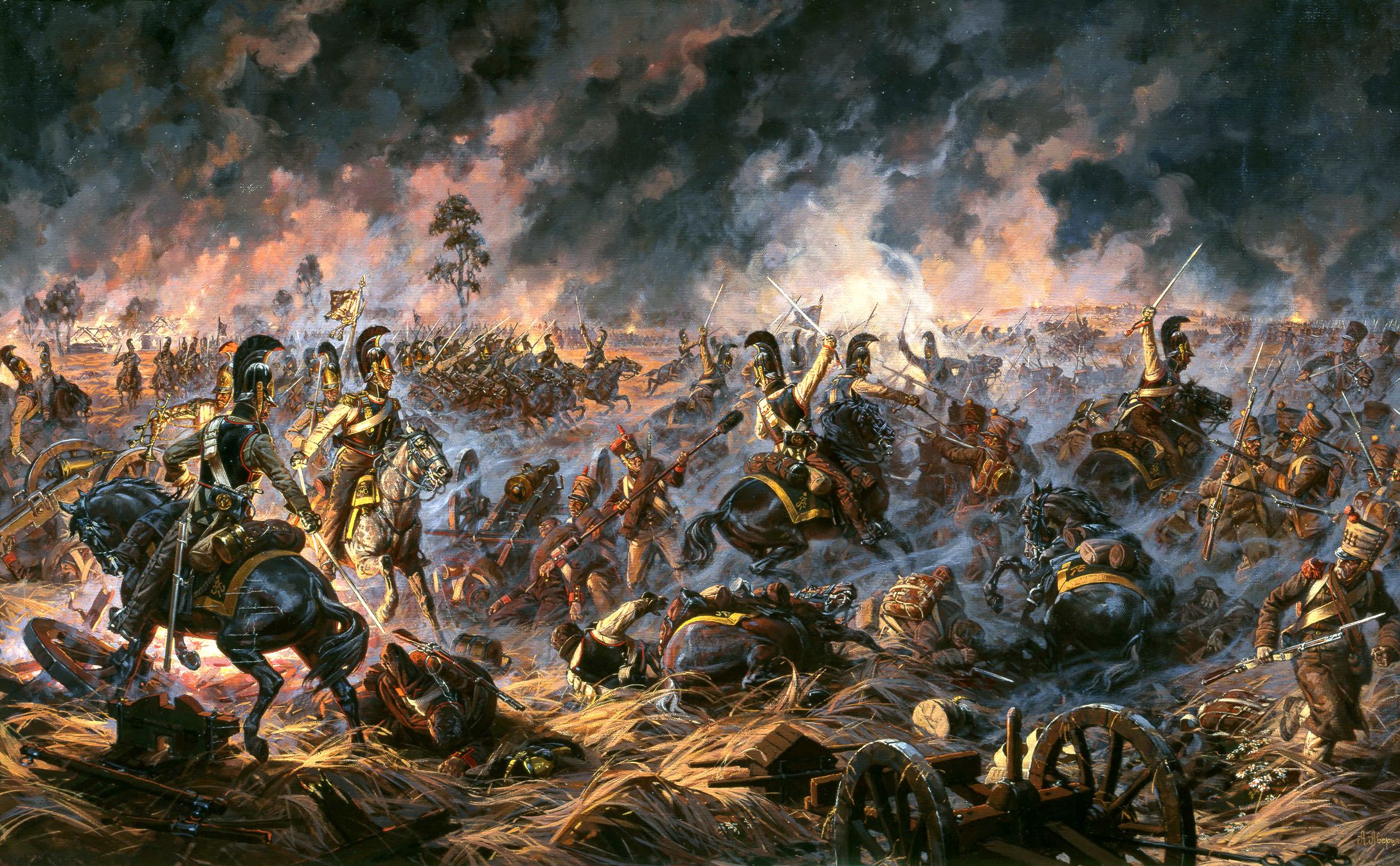
The foremost impediment to such a resolution was Britain, with which Napoleon had become locked in a struggle for global maritime and continental supremacy. Unable to confront the British on the high seas, Napoleon tried to destroy it economically by closing the entire European continent to its trade, thereby securing a captive market for French manufacturing and agriculture. Napoleon’s Continental System never succeeded entirely in preventing British goods from reaching mainland ports. In the case of Russia, the system forced the country to penalize itself by waging an economic war.
In an attempt to combat the smuggling of goods across the northwest German coastline, Napoleon in December 1810 annexed the Hanseatic towns and the Duchy of Oldenberg, the latter ruled by the father-in-law of Tsar Alexander’s sister, Grand Duchess Catherine Pavlovna. These moves infuriated the tsar, who responded by issuing a decree that reaffirmed Russia’s right to keep its ports open to the shipping of neutral countries and placed additional import duties on French luxury items and wines entering Russia. Although not an overt declaration of war, the decree essentially withdrew Russia from Napoleon’s imperial system at a time when he was capable of raising an army of almost a million men.
In an ill-advised move meant to enforce his blockade along the Baltic coast, Napoleon in January 1812 annexed Swedish Pomerania. Although an ally of France, two years earlier Sweden had elected one of Napoleon’s own officers, Marshal Jean-Baptiste Bernadotte, as crown prince and heir to their childless King Charles XIII. Sweden had been at war with Russia as recently as 1809, but this new annexation threw it into the Russian camp, as evidenced by Bernadotte’s signing of a friendship treaty with Alexander in April 1812. The new treaty secured Russia’s northern flank in case of war with France. The following month Alexander signed a peace treaty with the Ottoman Empire that ended the six-year war between the two rivals and secured Russia’s southern flank.
Fearing a Russian invasion of the Duchy of Warsaw, Napoleon ordered his dispersed armies eastward toward Prussia and East Poland, apparently believing a large-scale repetition of his 1807 campaign would not entail great risk. As a huge military buildup took place on both sides of the Polish border, Napoleon made plans to field an army vast enough to intimidate Alexander or, failing that, to force him into submission with a rapid blow. However, emergency levees in early 1812 that raised 400,000 new peasant conscripts, coupled with deep-seated military and social reforms, had transformed the tsar’s army into a far more formidable one than the French had faced in central Europe in 1805 and 1807. With war a fait accompli, Alexander left St. Petersburg for his army’s main base at Vilna on April 21, 1812, but he returned to his capital some weeks later, wisely allowing his commanders to conduct all subsequent operations.
Promising to return in two months, an overly optimistic expectation, Napoleon departed for the front on May 29, leaving Empress Marie Louise and their infant son with her father, Austrian Emperor Francis II, and reached the banks of the Niemen River on June 23. Preferring not to alienate his reluctant Prussian and Austrian allies, Napoleon intentionally did not stop in Warsaw. In the late 18th century, Austria, Prussia, and Russia had partitioned Poland. Although 90,000 Poles served in the Grand Armée, Napoleon had no intention of assisting his Polish allies to reunify their nation. In a Europe controlled by France, such dreams would have to remain unfulfilled.
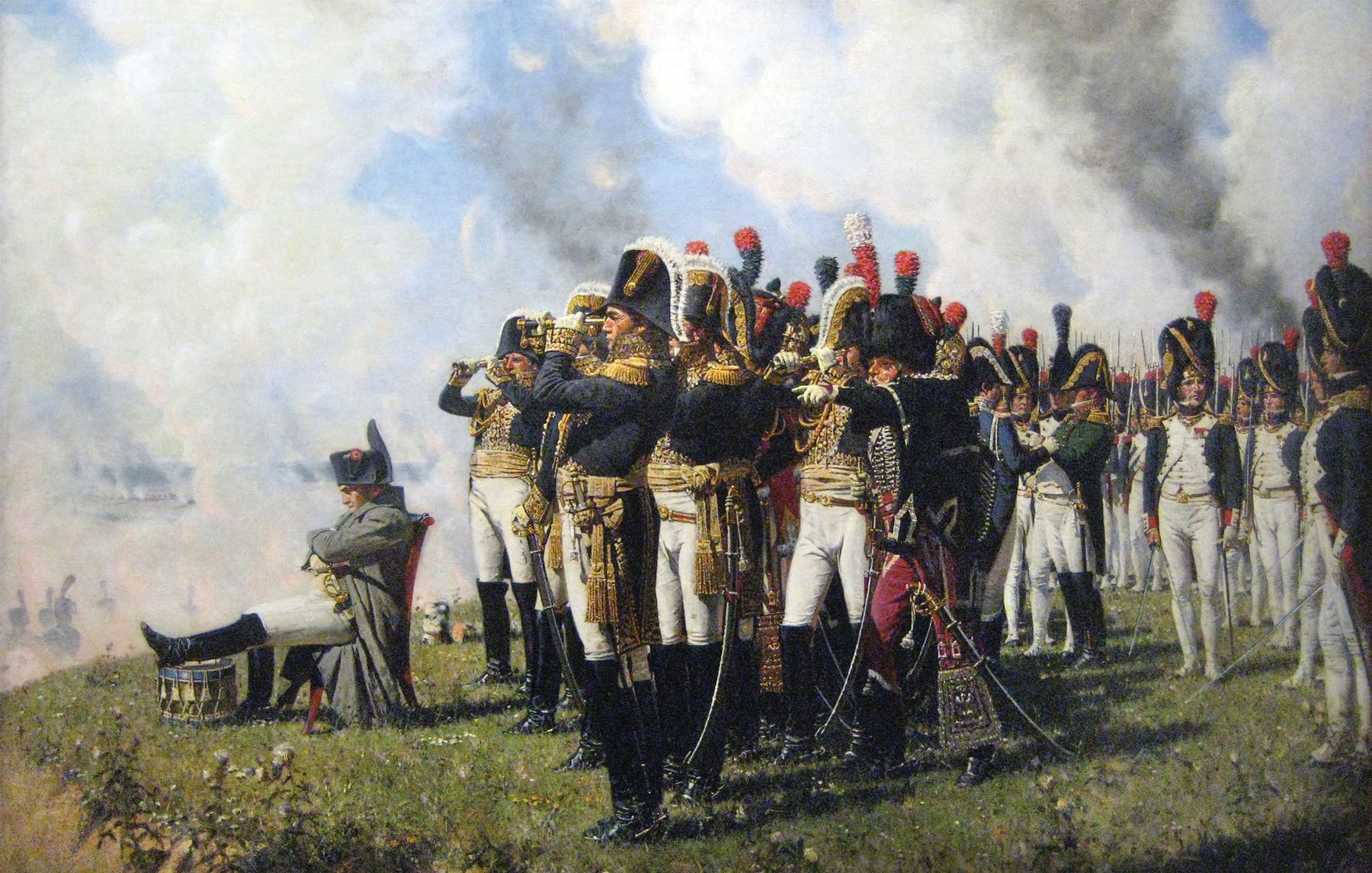
Napoleon’s resolve to field such a vast force, which included a 40,000-man cavalry corps under Marshal Joachim Murat to be used as a mobile spearhead, not only resulted in the greatest forage problem in the history of warfare, but also dictated the timing of the campaign’s start. Napoleon invaded Russia with more than 200,000 horses. His massive army needed 30,000 horses for its artillery, 80,000 for its cavalry, and 90,000 for its supply train. The supply train carried enough provisions to support the 600,000-man army in hostile territory for 40 days.
The means to adequately feed so many horses outstripped the army’s capabilities. The livestock would have to be fed on the new crop of hay and oats along the eastward march that would not be ready for harvest before the end of June at the earliest. “We were obliged to cut the grass of the meadows, and, when there was none, reap corn, barley, and oats which were only just sprouting,” wrote Colonel Jean Boulart of the Imperial Guard’s artillery corps. This not only destroyed the harvest but threatened the health of the horses because it failed to provide them with the nourishment required for forced marches.
Fed on unripe barley, oats, and even rotten straw taken from the thatched roofs of peasant huts, the dehydrated horses quickly came down with severe colic and dysentery and began perishing by the thousands. The flamboyant Murat was seemingly more concerned with his elaborate uniforms than the proper care and feeding of his animals.
The men of La Grande Armée began suffering food and fresh water shortages long before they began crossing the Niemen River into Russia on June 24, 1812. As provisions dwindled the troops in the lead columns began emptying barns and stables, harvesting crops, and looting peasant houses. Field Marshal Prince Michael Barclay de Tolly, Russia’s minister of war and commander of the First West Army, moved quickly to put a scorched-earth policy in place. As a result, French follow-on units found only deserted villages, ravaged fields, and poisoned wells. Punishing marches over the primitive road system in searing heat and choking dust, interrupted by freezing rainstorms that turned the roads into muddy bogs, left heavy supply wagons far behind. As they proceeded east, Napoleon’s columns steadily lost men and horses from thirst, hunger, and exhaustion.
Napoleon occupied Vilna without a fight on June 28. His focus at that time was on preventing a union of Barclay’s First West Army and General Prince Pyotr Bagration’s Second West Army. But by placing his inexperienced brother, Prince Jerome Bonaparte, in command of 80,000 troops, he lost an opportunity for a quick victory. Prince Jerome and Marshal Louis Davout had a chance to trap Bagration’s army early in the campaign, but Jerome’s bumbling allowed Bagration to escape. Napoleon berated Jerome for his incompetence, and his brother resigned and departed for his home in Westphalia. Barclay’s First West Army and Bagration’s Second West Army united on July 21.
Napoleon hoped to overtake the Russians in the open and destroy them, but they continued falling back. He pursued them through Drissa, Polotsk, and Vitebsk. The French emperor caught up with the rear guard of the combined Russian army at the walled city of Smolensk. After two days of fighting in which the city was burned, the combined Russian army continued its retreat. At that point, the French were 310 miles from Moscow. Napoleon’s obsession with achieving a decisive victory, and the relatively short distance remaining to reach Moscow, compelled him to press eastward even though his supply line was stretched far beyond the breaking point.
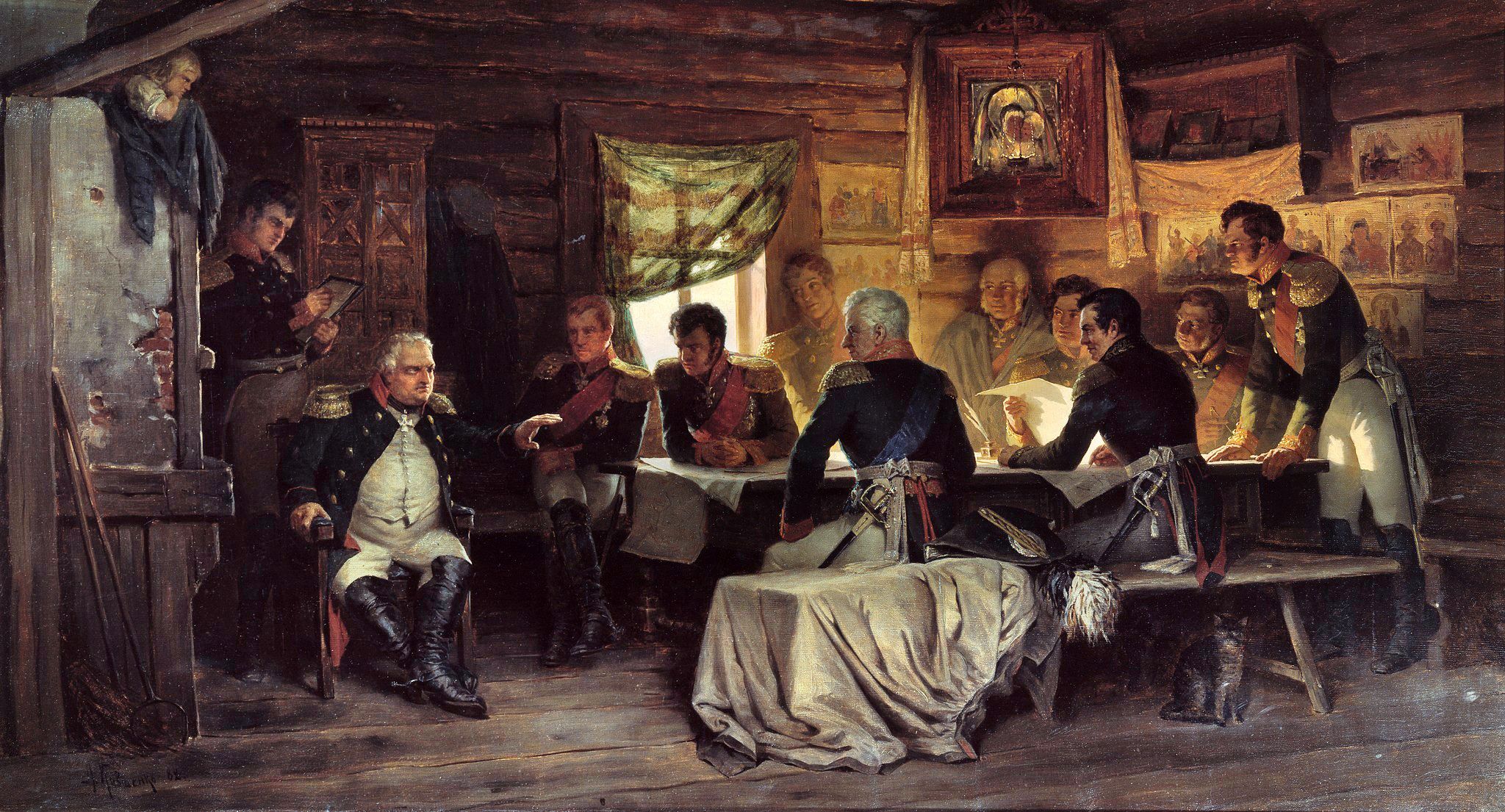
The Russian populace, army, nobility, and Tsar Alexander, though, were fed up with the continuous retreat, and now that Barclay and Bagration had joined forces there was a universal desire to stand and fight. The Russian defenders were deeply religious, illiterate serfs who had been conscripted for a lifetime of army service. They preferred to fight to the death rather than surrender an inch of sacred Russian soil.
Barclay was resented by aristocratic Russian officers as a Baltic German and not a true Russian. To reduce the friction plaguing his army’s high command, Alexander named the 67-year-old veteran Kutusov as commander in chief, leaving Bagration and Barclay in their present posts. The army and nation were elated. Kutusov joined the army on August 29 during its eastward trek and searched for a good position from which to confront the French juggernaut.
On September 3 Kutusov arrived at Borodino, a small village on the New Smolensk Road just north of the Kolocha River. He inspected and quickly approved a position suggested by one of his aides that would allow him to deploy his entire army astride the New Smolensk Road behind the protection of the Kolocha River’s steep banks. Thousands of militiamen were soon clearing woods, erecting earthworks, and dismantling entire villages to ensure clear fields of fire.
Kutusov believed Napoleon would advance eastward on the New Smolensk Road toward Moscow. On the morning of September 4, the general began making his dispositions, ordering the construction of several groups of unconnected redoubts along the line. The most impressive of these strongpoints was the Great Redoubt, or Raevsky Redoubt, studded with 12-pounder field guns, that was situated southeast of the village of Borodino.
The revered general put a great deal of effort into strengthening his right wing, which would be defended by Barclay’s First West Army. Barclay’s engineers oversaw the construction of sturdy earthworks around the village of Maslovo. Kutusov entrusted Bagration’s smaller Second West Army with holding the mostly open ground on the left wing. His troops manned the Shevardino Redoubt, which was a dangerously exposed forward position. Kutusov set up his command post in the village of Gorki, which was situated a mile behind Borodino.
By midday on September 4, the Russian line ran diagonally for five miles from Maslovo near the confluence of the Kolocha and Moskova Rivers to the village of Shevardino. Although Barclay’s army blocked the New Smolensk Road on the north end of the battlefield, the Old Smolensk Road three miles to the south lay undefended beyond Bagration’s left flank. This road cut in sharply behind the Russian left wing from the west to join the main road to Moscow behind the Russian lines. If Napoleon pushed rapidly eastward along the Old Smolensk Road and turned the Russian left, he could get behind Kutusov’s entire army and cut off its retreat route to Moscow.
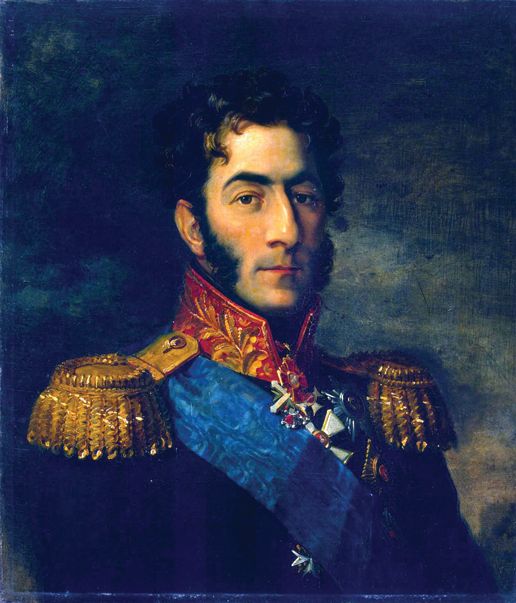
Marshal Murat’s vanguard arrived west of Borodino on the morning of September 5. It deployed in preparation for an advance against the Shevardino Redoubt. Finding the Russians preparing for battle, Murat promptly notified Napoleon, who arrived at midday to reconnoiter the enemy’s position. The emperor concluded that the Russian right wing was virtually unassailable while the open ground south of the New Smolensk Road offered better prospects. The Polish V Corps, which was led by Marshal Prince Josef Poniatowski, had arrived via the Old Smolensk Road to support an advance. With sufficient forces on hand, Napoleon decided to launch an attack against the Russian left wing.
In response to his subordinates’ pleas to adjust his flawed positions, on September 5 Kutusov ordered the Russian left wing to withdraw eastward into a new line that would run south from Borodino to the village of Utitza on the Old Smolensk Road. The Shevardino Redoubt would remain manned. Its purpose was to retard the French advance. He ordered General Nikolai Tuchkov’s III Guards Corps out of the reserve, along with 1,500 Cossacks and 7,000 militiamen, astride the Old Smolensk Road just south of Utitza, and deployed four regiments of jaegers into the wooded area on Tuchkov’s right, consolidating his new line between the New and Old Smolensk Roads. However, Kutusov insisted on keeping both the II Corps of Lt. Gen. Karl Baggovut and the IV Corps of Lt. Gen. Aleksandr Osterman-Tolstoy in their original positions on the right wing where he still expected Napoleon to strike.
The tip of the Russian defenses, the unfinished Shevardino Redoubt, had by that time become an isolated salient. Napoleon ordered Davout to immediately liquidate it with the troops at hand. It took seven hours and 35,000 soldiers to seize the redoubt, which changed hands several times and was destroyed by French artillery fire at a cost of 6,000 Russian and 4,500 French casualties. Realizing the position had become untenable, Barclay ordered the survivors to withdraw on the night of September 5-6 to Bagration’s new line.
Both armies used September 6 to make the final dispositions of their forces for the impending battle. After 10 weeks of marching and skirmishing, the soldiers of both armies were eager for battle and aware of the high stakes involved. A solemn religious procession that included Kutusov and his staff, Orthodox clergy, and the revered icon of the Virgin of Smolensk took place within the Russian lines. There was no such event on the French side, though, given that Napoleon’s multinational army was almost entirely secular.
In a last-minute preparation, Kutusov also ordered the construction of three additional earthworks on a piece of high ground west of Semenovskaya village, a mile south of the Great Redoubt, that would become known as the Bagration fleches. The rocky ground and a shortage of tools impeded the Russians’ progress. When hostilities resumed the following morning, they had not finished building the fleches.
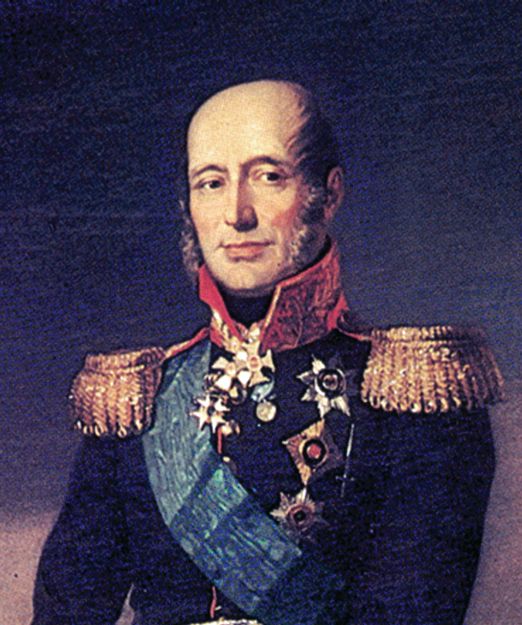
After Napoleon’s deployment south of the main road and seizure of the Shevardino Redoubt negated any possible Russian offensive actions, Kutusov resolved to stand on the defensive and inflict crippling losses on the attackers. As for Napoleon, he intended to bludgeon the weak Russian left until a breakthrough was achieved.
Although he was suffering from a severe cold and recurrent bladder infection, Napoleon was up at 3 am on September 7 and at his command post on a mound behind the ravaged Shevardino Redoubt. Sitting on a folding camp chair, Napoleon could see the entire battlefield and had drawn up his elite Imperial Guard Corps, 18,500 strong, alongside and behind him, safely out of artillery range. When 102 French guns opened fire at 6 am against the Russian left and center manned by Bagration’s Second Army, they were answered in kind by Russian artillery, and the fighting at Borodino commenced once again. The reeds and brushes along the Kolocha River were alive with Russian jaegers. Behind them on rising ground were deployed massed ranks of Russian cavalry and infantry in front of the redoubts, on whose parapets gleamed brightly polished bronze cannons. More massed bodies of troops could be seen behind the redoubts.
Kutusov deployed his 120,000 regulars into deep, narrow columns backed by large concentrations of artillery. They were opposed by the Grand Armée’s 103,800 men. The French had 587 guns, and the Russians had 640 guns.
Kutusov’s army included 10,000 Cossacks and 31,000 militiamen. The militia troops took no part in the fighting. Their task was solely to remove the wounded and form a cordon behind the front lines to prevent desertion. Rejecting Davout’s proposal to outflank the weak Russian left, Napoleon instead ordered Davout’s I Corps to attack directly forward into the teeth of the enemy’s defenses. The responsibility for the flanking maneuver lay with Poniatowski’s corps, which was deployed farther south on the old road.
The troops of both sides were exposed to massed artillery fire as they waited to go into battle. The French guns pounded the Russian positions, particularly the earthworks, throwing up clouds of dust, which when mixed with smoke from the defending guns, created an impression of a vast, swirling sea.
With its 18 cannons firing as fast as possible, the Great Redoubt resembled an erupting volcano. Maj. Gen. Prince Eugene de Beauharnais, Viceroy of Italy, whose IV Corps held the French left opposite Borodino village and the Great Redoubt, quickly occupied Borodino after sweeping away three battalions of advanced Lifeguard Jaegers, who lost half their men in the brief action. Two more of Eugene’s divisions crossed the Kolocha, but a Russian counterattack drove them back across the river.
Meanwhile, Marshal Davout unleashed a fierce ground assault against Bagration’s southernmost fleche. Davout sent a total of 22,000 troops from three divisions who deployed for battle in brigade columns. The divisions were Maj. Gen. Louis Friant’s II Division, Maj. Gen. Joseph-Marie Dessaix’s IV Division, and Maj. Gen. Jean Compans’ V Division. They were opposed by the three divisions that constituted Lt. Gen. Mikhail Borozdin’s VIII Corps. The Russians, who were outnumbered, suffered substantial losses from the devastating French artillery fire.
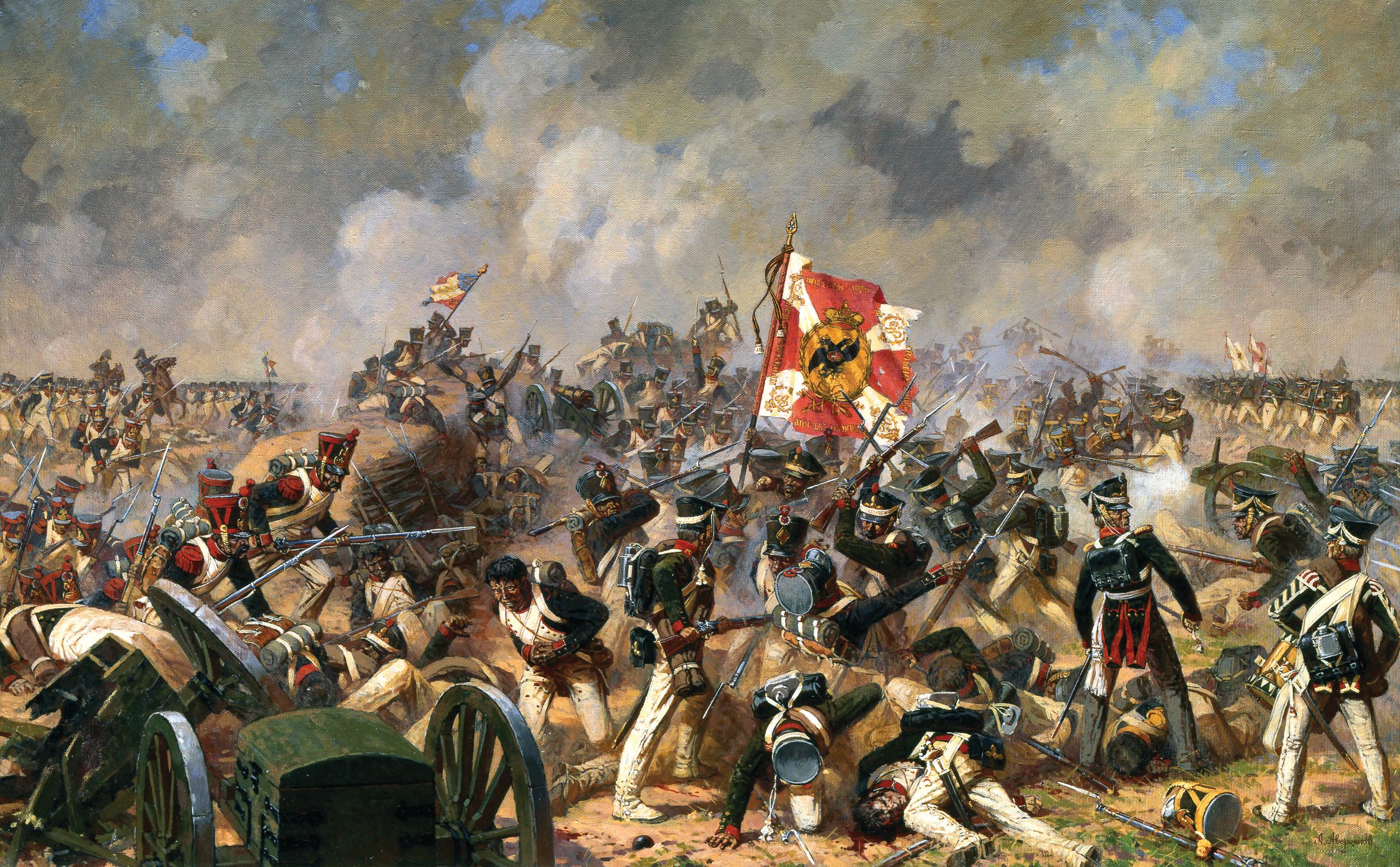
Compans’ division, which was spearheaded by the renowned 57th Line Infantry Regiment and 30 guns, moved ahead and quickly disappeared into the dust, smoke, and fog. French voltigeurs brushed aside Russian skirmishers. After exiting the woods on the far bank of the Kolocha and closing upon the southernmost fleche, Russian guns pummeled the 57th Line. “Suddenly, from that peaceful plain and the silent hills, volumes of fire and smoke were seen spouting out, followed by a multitude of explosions, and the whistling of bullets tearing the air in every direction,” wrote Brig. Gen. Philippe Paul de Segur. Compans was struck in the shoulder and unable to continue commanding his troops.
Seeing the confusion, Davout, who was known as the Iron Marshal, assumed command. He led the 57th Line Regiment forward only to have his horse shot out from under him. He tumbled to the ground so hard that his men believed he was dead. General Gene Rapp arrived to replace him, only to find Davout alive and again commanding the 57th as it seized the earthwork, albeit temporarily. Rapp, one of Napoleon’s most trusted aides, led the 61st Line Regiment forward and was wounded.
To the south, Poniatowski attacked Utitza and the wooded slopes and forests adjacent to and north of that village. His efforts were aided by the transfer of some of the Russian units in the sector to the hard-pressed fleches to the north. Kutusov dispatched two divisions from General Karl Gustav von Baggovut’s corps to reinforce Tuchkov’s troops, who stood between Poniatowski and the Russian rear. Tuchkov was killed in the seesaw, indecisive fighting in and around Utitza, where the Poles finally found themselves, despite valiant efforts, unable to make a breakthrough. Poniatowski’s depleted corps spent the rest of the day in a fruitless battle of attrition astride the Old Smolensk Road and in the woods to its north.
A furious Russian counterattack soon expelled the French from the southern fleche. Yet a second assault was rapidly mounted. Rapp, who led Compans’ division, was supported by Dessaix’s division and elements of Maj. Gen. Jean Junot’s VII Corps. Meanwhile, Maj. Gen. François Ledru’s division of Marshal Michel Ney’s III Corps attacked the nearby second fleche. A battalion of grenadiers braced for the attack in each fleche. Seven more battalions were deployed in columns to the rear.
The French captured both redoubts in fierce melees. The flimsy earthen parapets crumbled under the storm of shells from the French artillery. With the cramped conditions making reloading fouled muskets nearly impossible, foot soldiers on both sides resorted to the bayonet. Maj. Gen. Prince Mikhail Vorontsov, commanding the Second Combined Grenadier Division, was wounded in the fighting. By 8:30 am his division had been annihilated. Of his 4,000 troops, 3,700 were killed, wounded, or missing.
Davout had gained possession of the two advanced Bagration fleches. The French initially failed to see the third fleche to the northeast. Bagration quickly led a counterattack that expelled the French. But Marshal Ney, who commanded three divisions totaling 10,000 men and was supported by 7,000 of Ledru’s Westphalians, recaptured the key positions. In desperation, Bagration turned to Barclay for help rather than to Kutusov. To his credit, Barclay responded within the hour, dispatching three guards regiments, three cuirassier regiments, eight grenadier battalions, and 36 guns to support Bagration.
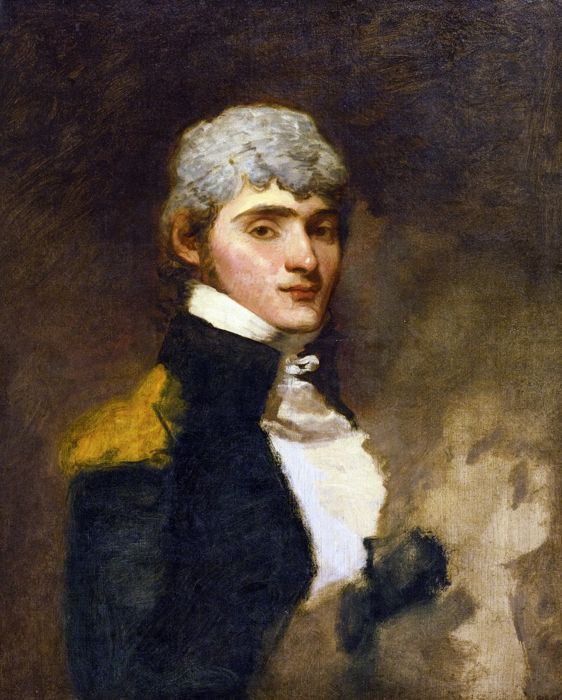
The fleches proved to be death traps for the French. They were simple earthen works that were open at the back and had ramparts no more than six feet high. Once the French had taken them, they found themselves facing multiple lines of Russian troops. It was only after they had taken the second fleche that the French realized there was a third fleche. While Russian guns shelled the French ranks, Maj. Gen. Dmitry Neverovsky led his 23rd Infantry Division in a counterattack that drove the French from the fleches. The French rallied for another assault. Both sides fed reinforcements into the fray. The French attacks and Russian counterattacks succeeded each other one after the other, leaving thousands of dead and wounded men and horses strewn across the smoke-covered field.
Napoleon remained at the Shevardino Redoubt throughout the battle. “Every time I returned from one of my numerous missions, I found him sitting there in the same position, following all the moves through his pocket telescope and issuing his orders with imperturbable calm,” wrote Colonel Louis Lejeune, a French aide-de-camp.
After deploying his various infantry and cavalry corps for battle, Kutusov remained at his command post near Gorki for almost the entire day, unable to see the battlefield, doing little more than releasing reserves when requested. This left Barclay and Bagration, who were quite competent to manage a defensive battle in which no grand maneuvers were attempted on either side, to conduct operations.
With the French again in possession of all three fleches in the late morning, Bagration rallied his troops for a final effort and led them in himself. The counterattack succeeded, but at the moment of triumph Bagration was struck in the leg by a shell fragment that inflicted a mortal wound. His troops lost heart, and the next French attack cleared the Russians from the fleches for good, driving them back across the ravine of the Semeonovka stream all the way to the ruins of the village of Semenovskaya, where houses were collapsing under the French bombardment.
“There are no words to describe the bitter despair with which our soldiers threw themselves into the fray,” wrote Ivan Lubenkov, a Russian captain. “It was a fight between ferocious tigers, not men, and once both sides had determined to win or die where they stood, they did not stop fighting when their muskets broke, but carried on, using butts and swords in terrible hand-to-hand combat.” The French had committed 40,000 infantry and 11,000 cavalry to capture the fleches.
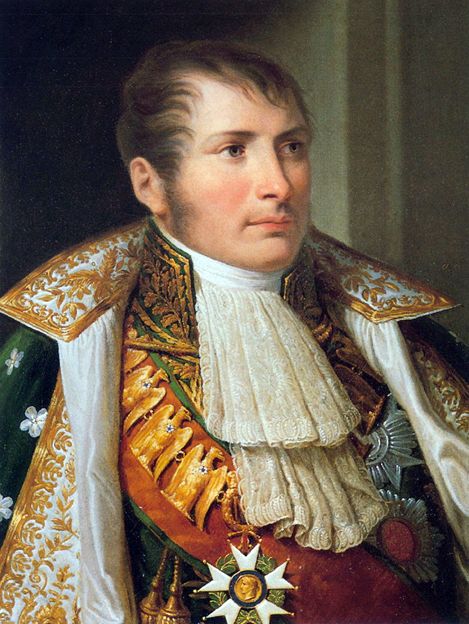
Both commanders had tapped into the bulk of their reserves by noon. Having redeployed Osterman-Tolstoy’s IV Corps from his unmolested right wing to bolster his center and left, Kutusov agreed to send a combined cavalry force north across the Kolocha River in a small-scale raid to harass Eugene’s left and rear. This force, which consisted of Count Matvei Platov’s Cossacks and General Fyodor Uvarov’s I Cavalry Corps regulars, numbered 8,000 men and a dozen cannons. The spoiling attacks conducted by Platov against the French baggage train and Uvarov against Eugene’s infantry ranks accomplished little. Kutusov judged them both to be failures. The sudden appearance of enemy cavalry close to Eugene’s supply train and headquarters while he was making preparations to attack the Great Redoubt, prompted the usually unflappable commander to postpone his attack. He dispatched 17 cavalry regiments to deal with the unexpected threat. The Russian mounted foray succeeded in delaying Eugene’s attack on the Great Redoubt for two hours. This gave the Russians time to regroup and shore up their battered left wing.
The defenders of the Great Redoubt were commanded by General Prince Nikolai Raevsky. “We built these batteries ourselves,” Raevsky wrote. “A sapper officer advised us to dig a series of wolf-pits 150 meters before the redoubt as the position was at risk of being overrun by cavalry. We did this and now all we had to do was await the enemy.”
Although hastily constructed, the four-sided, earthen Great Redoubt was nevertheless formidable. Erected on a 200-yard-long hillock, the Great Redoubt faced west. It consisted of two 70-yard-long shoulders that met at a 90-degree angle in the center of the Russian front line. The redoubt was extended by fortifications to its flanks. Unlike the fleches, the Great Redoubt had protection in the rear, consisting of a double wooden palisade with an eight-foot high inner wall and a six-foot-high outer wall.
Raevsky’s VII Corps was tasked with defending the Great Redoubt and part of the Russian line on its left, but when the fighting escalated farther south he had to dispatch troops to help Tuchkov. When Eugene launched his first attack against the Great Redoubt, Raevsky was in command of two infantry divisions, six jaeger regiments, and an 18-gun artillery brigade. The bulk of the jaegers were posted in a skirmish line to the redoubt’s front while the two infantry divisions and 19th Jaegers were posted alongside and to the rear, ready to launch counterattacks against the French. After a devastating artillery bombardment inflicted appalling losses upon the defenders both inside and outside the Great Redoubt, Eugene sent in one division from the northwest, commanded by General Jean-Baptiste Broussier, which was quickly repulsed.
General Charles Antoine Morand made the second attempt, and this time soldiers of his 30th Line Regiment managed to scale the approaches, pass through the embrasures, and enter into the Great Redoubt, forcing Raevsky to temporarily abandon his command post. With most of the 30th Line still fighting outside, though, Morand’s unsupported attackers inside the works faced the inevitable counterattack alone. The Russians soon retook the Great Redoubt, though at a heavy cost. General Alexander Kutaisov, the highly regarded commander of the Russian artillery, was killed in the counterattack. Kutusov did not replace Kutaisov, which meant the Russian superiority in this arm was never adequately brought into play for the rest of the day.
With his advance stalled, Eugene crossed back to the north bank of the Kolocha River in the early afternoon, both to bolster the troops under attack there by enemy cavalry and to prepare his three divisions for the next assault on the Great Redoubt. The withdrawal of IV Corps, though, left only General Louis-Pierre Montbrun’s II Cavalry Corps to fill the large gap in the French line where they suffered under massed artillery fire that severely thinned their ranks and destroyed their morale. Marshal Marquis Emmanuel de Grouchy’s III Cavalry Corps was sent to cut up any Russian infantry in the area, but failed when the Russians withdrew into squares. After Grouchy’s troopers returned to their lines, the French redoubled their artillery bombardment. The shelling killed and maimed thousands of men and horses in the tightly packed Russian ranks.
With a breakthrough on either wing doubtful, the French could only achieve victory in the center. Situated roughly in the Russian line between the Great Redoubt and the fleches and already burned and virtually demolished, the village of Semenovskaya had been destroyed by French artillery fire. Murat’s cavalry swept in to deliver a potentially decisive blow. Although thousands of Russian grenadiers in the village fought to the death, the French advance drove them from the burning village.
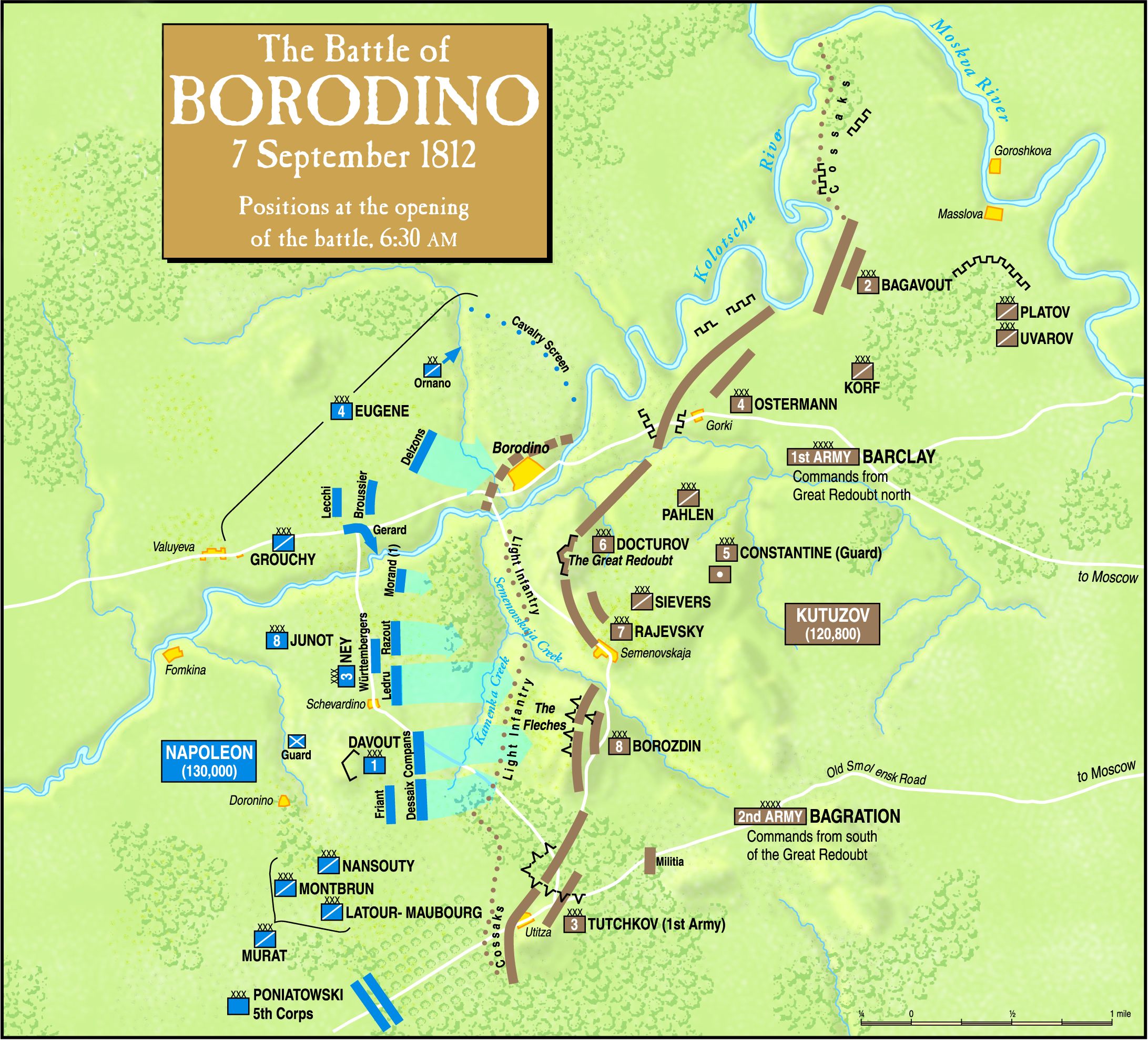
For a short time Kutusov’s army was split in two. Appeals to Napoleon by Davout, Murat, and Ney to commit the Imperial Guard Corps were made. But Napoleon was not inclined to commit the Guard so deep in enemy territory. He believed it was essential to preserve it for future actions. As a result, a chance for victory was lost. Napoleon also failed to make optimum use of Murat’s cavalry. Receiving no order to exploit the gap in the enemy’s line, Russian reinforcements drove them back from the area around Semenovskaya village. The cavalry remained immobile for several hours during which they suffered heavy losses, including the loss of Montbrun from Russian cannon fire. The Russians brought up more reserves and plugged the gap, which enabled the Russian line to remain intact.
At 2 pm Eugene unleashed a massive, coordinated infantry and cavalry attack against both the front and flanks of the shapeless Great Redoubt, sending in three infantry divisions in a frontal assault while French heavy cavalry attacked from left and right. Half of Osterman-Tolstoy’s corps, sent from the Russian right, and Maj. Gen. Peter Likhachev’s 24th Infantry Division occupied the redoubt. In the tumult, Maj. Gen. Auguste de Caulaincourt, commanding the II Cavalry Corps, attempted to lead French cuirassiers into the rear of the redoubt, but he was cut down by a cannonball when fierce Russian fire broke up his charge.
Brigadier General Johann von Thielmann, commanding the Saxon Heavy Cavalry Brigade, led eight Saxon and two Polish cavalry squadrons against the rear of the redoubt. His officers and sergeants forced their horses through the crumbling embrasures and into the seething cauldron where French cavalrymen and Russian infantrymen were engaged in a momentous struggle. When the French infantry poured over the breastworks, Likhachev was captured, the defenders annhilated, and the Great Redoubt irretrievably lost.
“The Raievski Redoubt and the area around it offered an aspect which exceeded the worst horrors one could ever dream of,” wrote Lieutenant H. Brandt of the Vistula Legion, which was attached to the French Young Guard. “The approaches, the ditches, and the earthwork itself had disappeared under the amount of dead and dying, of an average depth of six to eight men, heaped one upon the other.”
Gathering all the exhausted horsemen he could find, Eugene attempted an advance to exploit the fall of the Great Redoubt. Though the French cavalry had suffered dreadful losses storming the redoubt and their horses were in terrible condition, they still outnumbered their foe by a substantial margin. Barclay therefore committed his remaining cavalry reserves, the elite Chevaliers Guardes among them, who finally drove back the French cavalry after two hours of confused fighting. The Russian infantry formed squares when French cavalry squadrons stormed their new line. With no additional reserves and Napoleon still refusing to commit the Guard, the redoubtable Prince Eugene was unable to accomplish anything further.
Upon hearing of the Great Redoubt’s fall, Poniatowski mounted another advance on the French right at 4 pm, capturing Utitza village and the knoll upon which it stood, before halting an hour later while the defenders pulled back to their main line. By 5 pm the Battle of Borodino was nearly over. Both armies were bloodied and exhausted. Napoleon’s Grand Armée had advanced roughly to the site of the Russian positions at the start of the battle. Barclay’s forces, battered but not broken, had retired only a short distance to the east to the next ridge. This was hardly the outcome Napoleon had desired. Too weary to pursue, the French withdrew to their original lines.
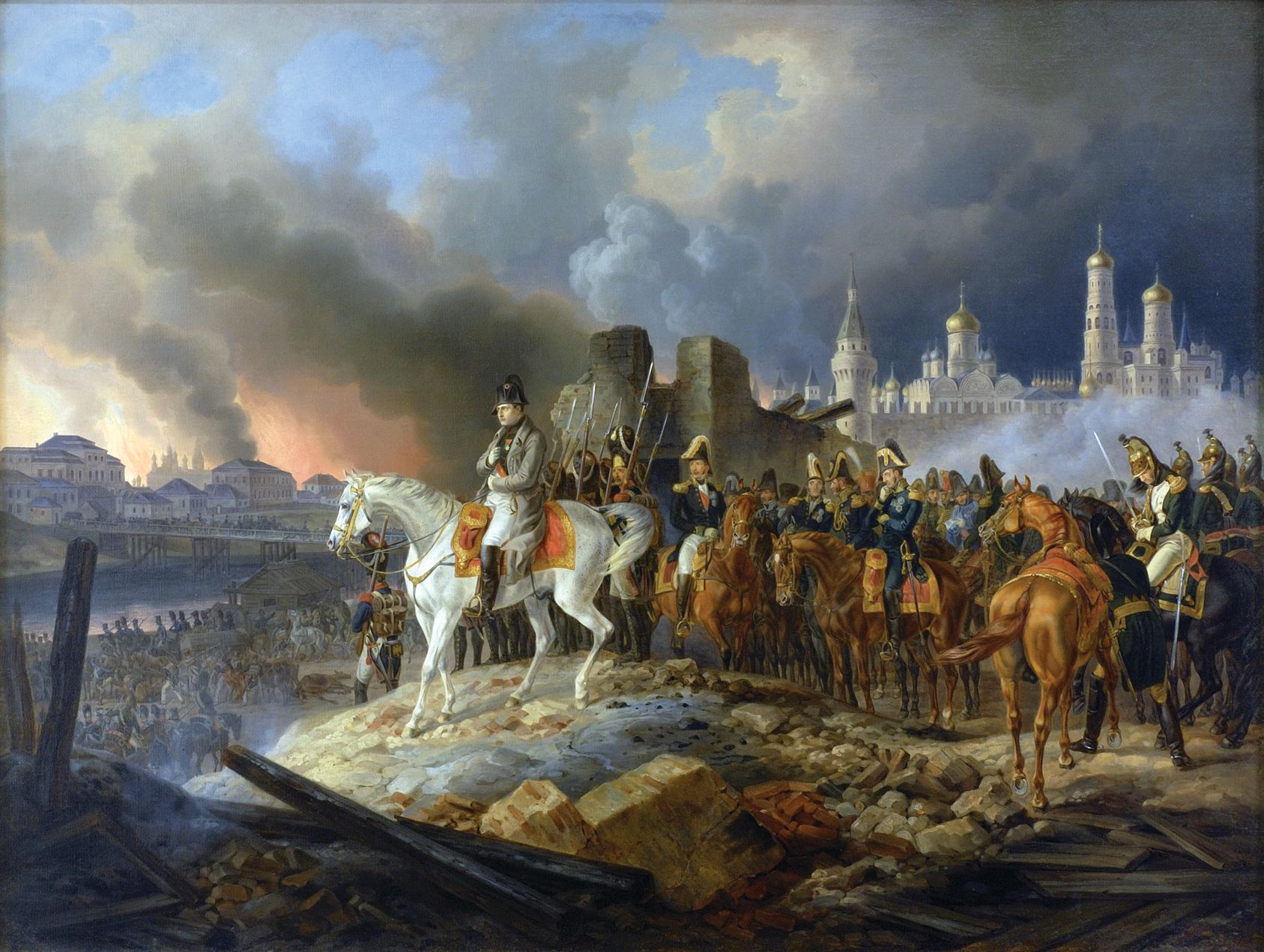
The bloodiest single day’s fighting of the Napoleonic era thus ended in an exhausting stalemate, neither commander having achieved his objectives. The cost of Kutusov’s flawed dispositions was staggering. He suffered 43,000 casualties, which when added to those lost earlier at Shevardino amounted to one-third of his army. When he realized the extent of his losses and that Napoleon’s Imperial Guard had not been committed, Kutusov ordered a retreat toward Moscow. As for the Grande Armée, it suffered 27,000 casualties. Napoleon chose not to attempt a rigorous pursuit when the Russians withdrew.
Napoleon arrived in Moscow on September 14 to find the city stripped of supplies and with only a third of its population of 270,000 still in residence. Russian hooligans, with the tacit approval of the city’s governor, set fire to the city that night. The conflagration destroyed most of the city, leaving the Grande Armée without quarters to protect it from the harsh Russian winter.
While Kutusov regrouped and rebuilt his army south of the city, Napoleon waited five weeks for a surrender that never came. Alexander feared his nobles would kill him if he were to surrender. With winter approaching and none of his objectives achieved, Napoleon exercised the best option that remained to him, which was to order a general retreat. On October 19 the Grande Armée marched out of the city to begin an 800-mile retreat to the Niemen River.
Although Napoleon wisely chose a withdrawal route that swung southwest toward Kaluga, Kutusov anticipated the move. The savvy Russian commander deployed his army to block the retreat. After one of Napoleon’s officers advised him it would take another battle on the scale of Borodino to dislodge the Russians, the French emperor diverted his dwindling army, by then reduced to 90,000 men, back to the despoiled path he had taken to reach Moscow.
When the Russian winter struck with its full fury the first week of November, the typhus-infested Grande Armée’s retreat degenerated into a death march. The starving French soldiers butchered their horses, leaving the cavalry without mounts and the army as a whole without either cannons or supply wagons. The nightmarish conditions resulted in a widespread collapse of discipline and morale. The only unit retaining its cohesion during the retreat was the Imperial Guard Corps.
The Grande Armée’s retreat, which was characterized by intense suffering and cruelty in unbearable winter conditions, remains one of the defining images of the Napoleonic era. The disaster in Russia compelled Napoleon’s remaining allies to turn against him and ultimately led to his abdication and exile to Elba.
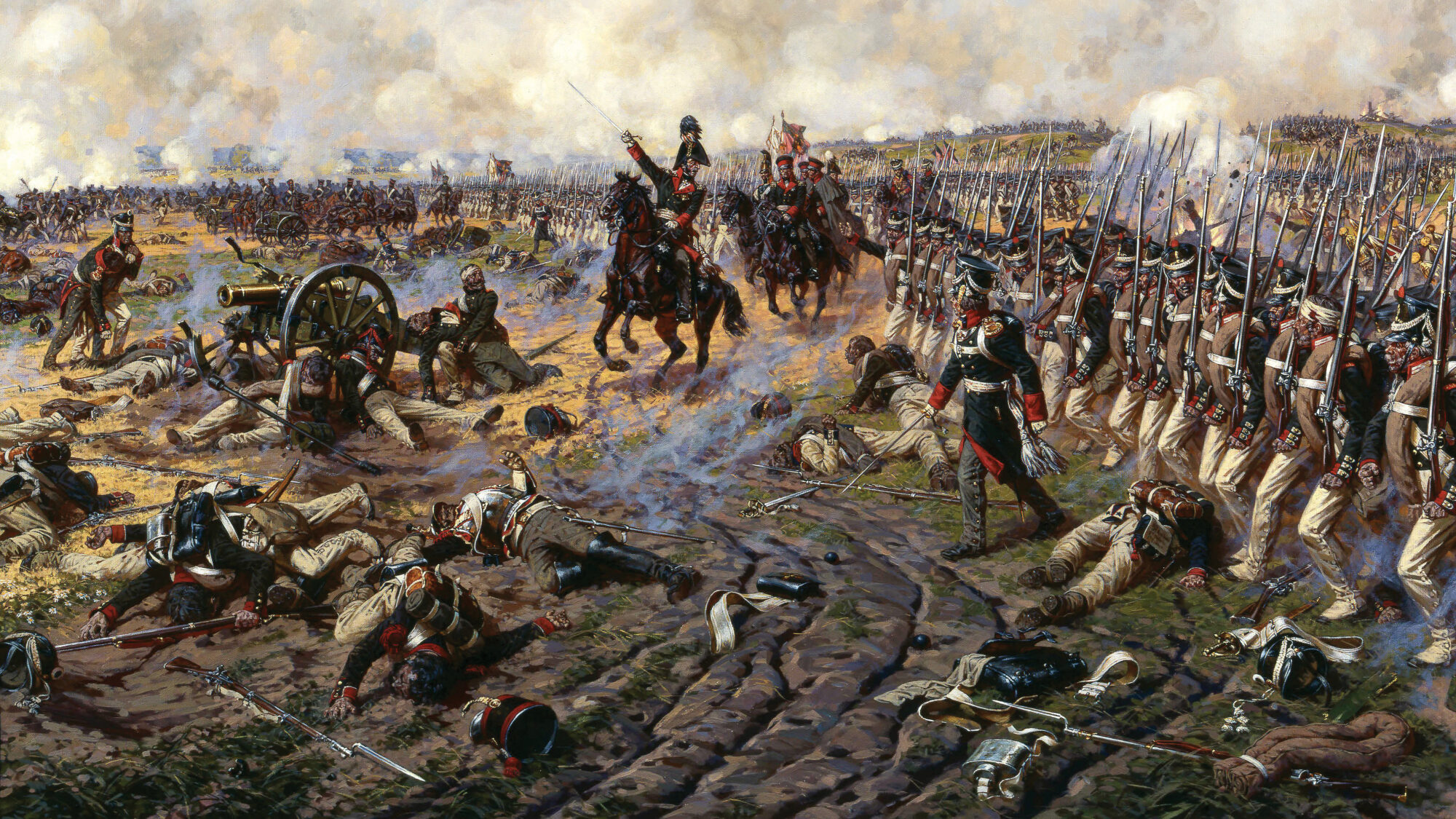
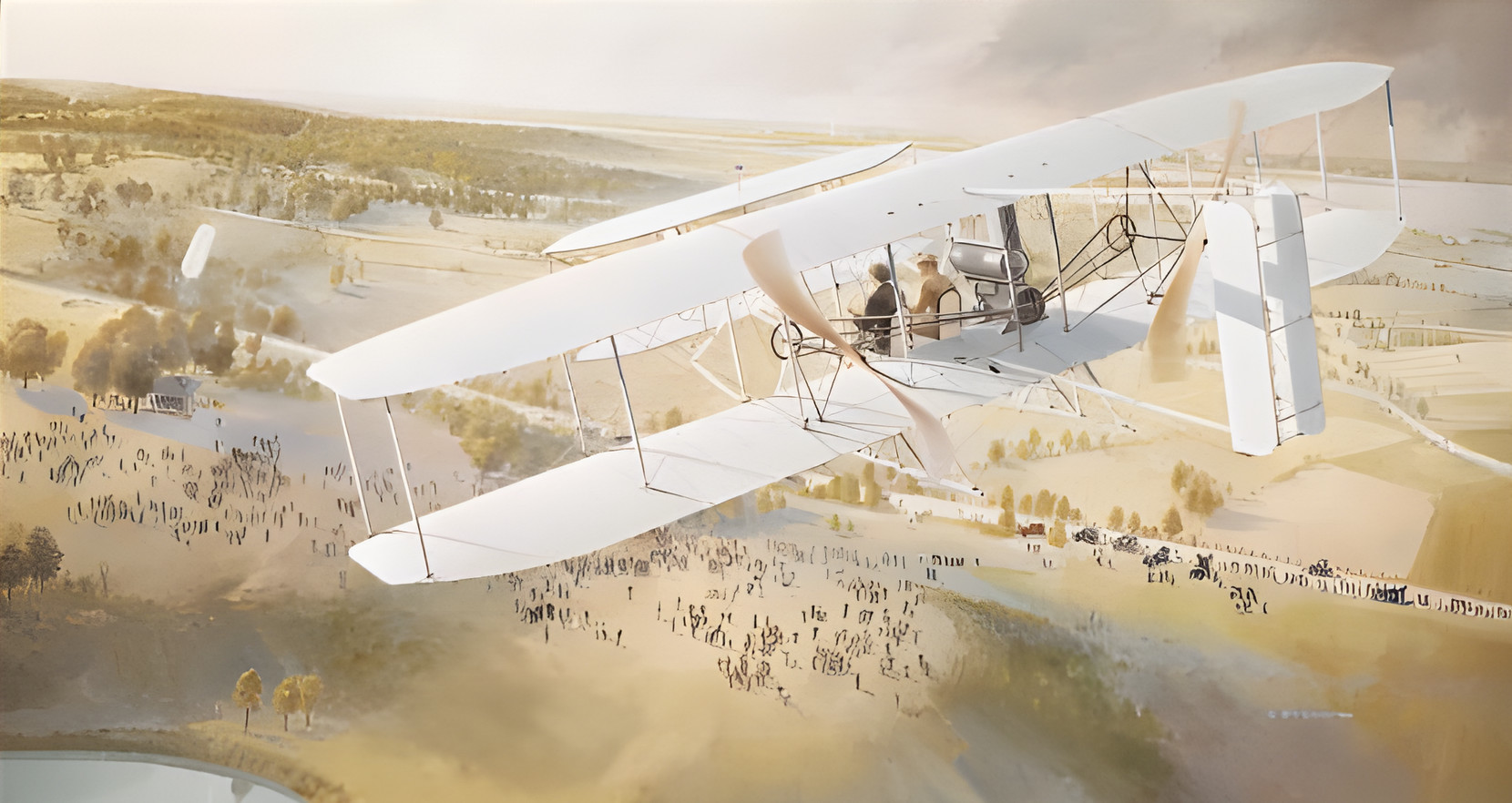
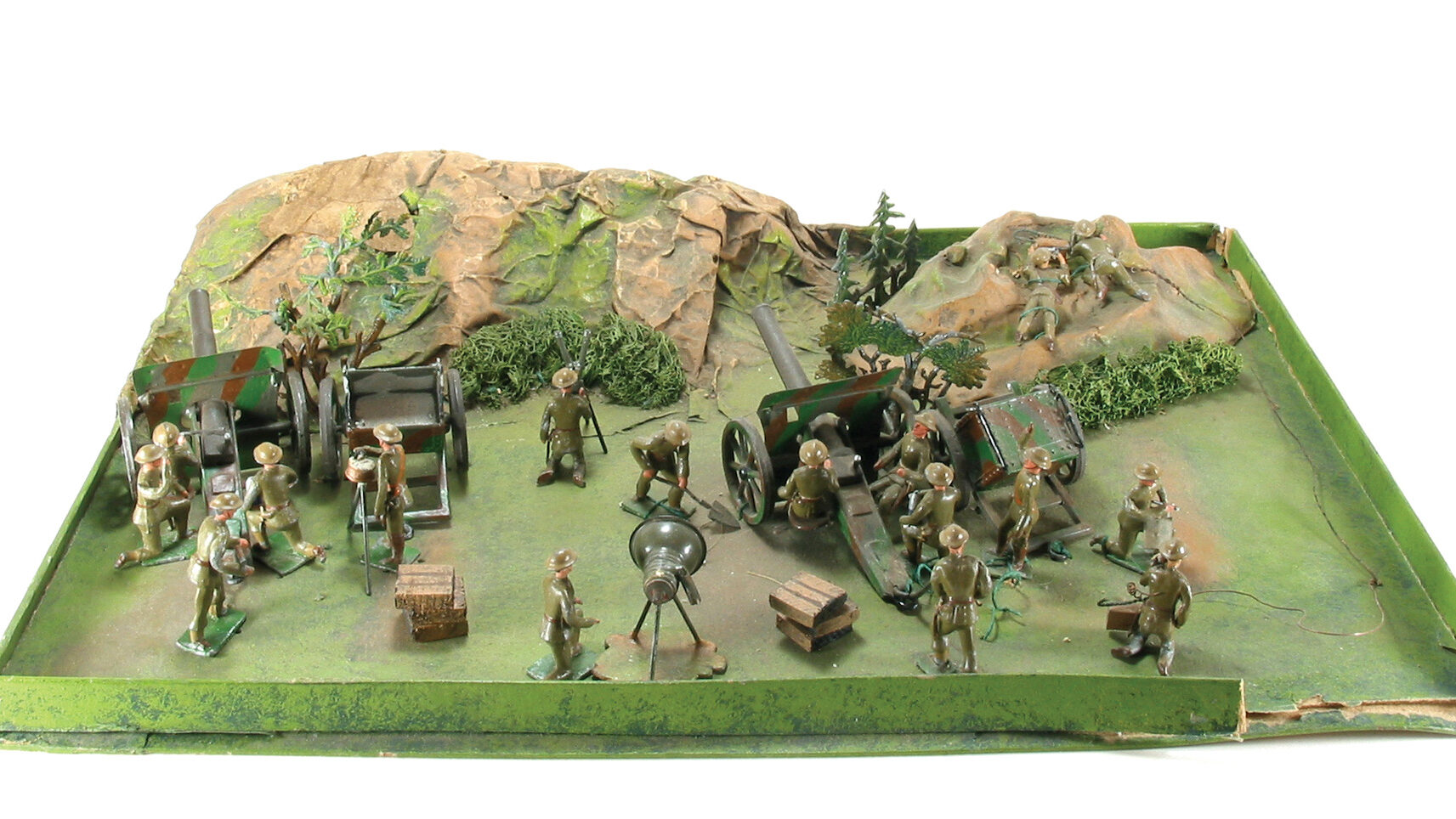
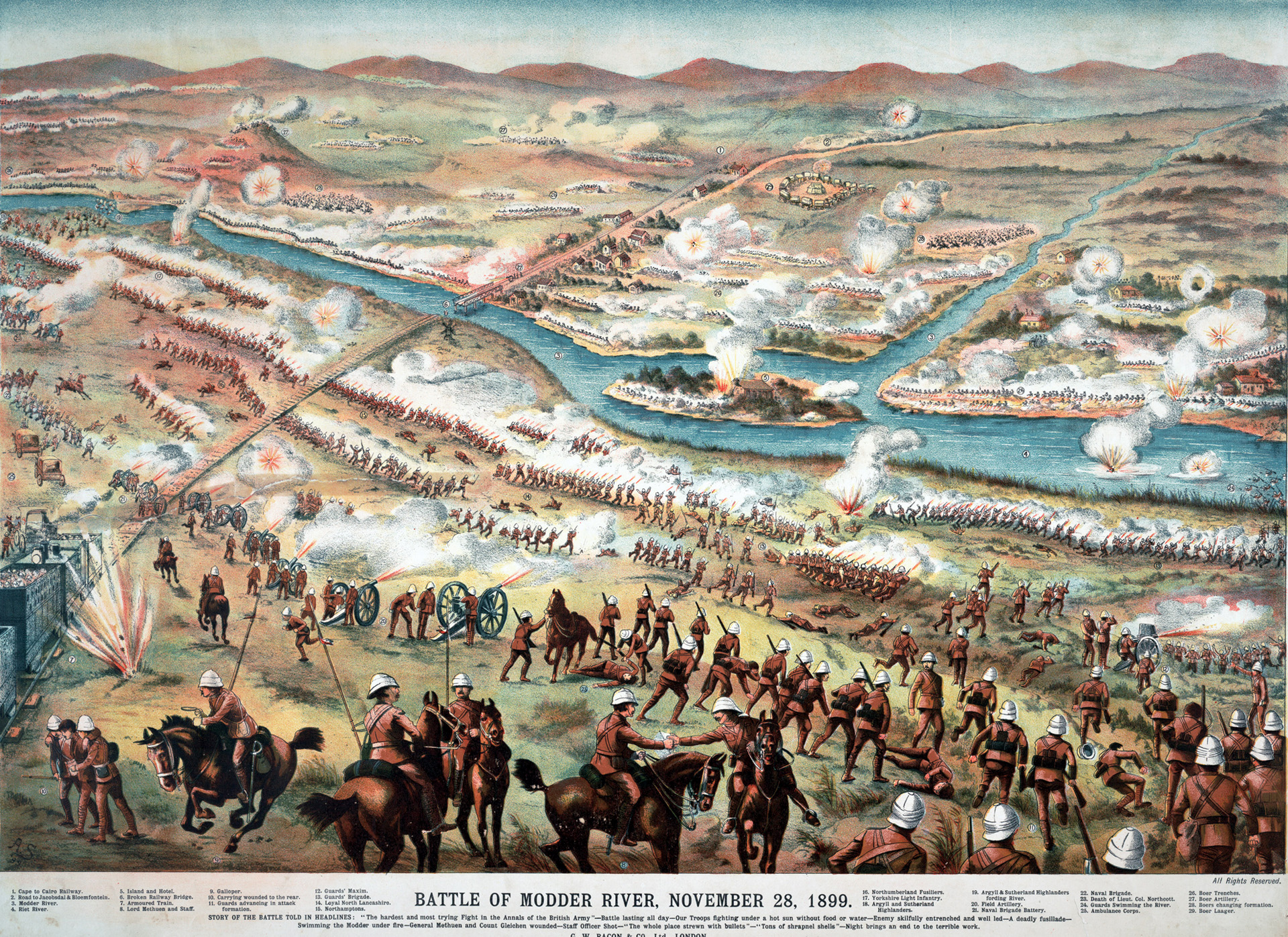
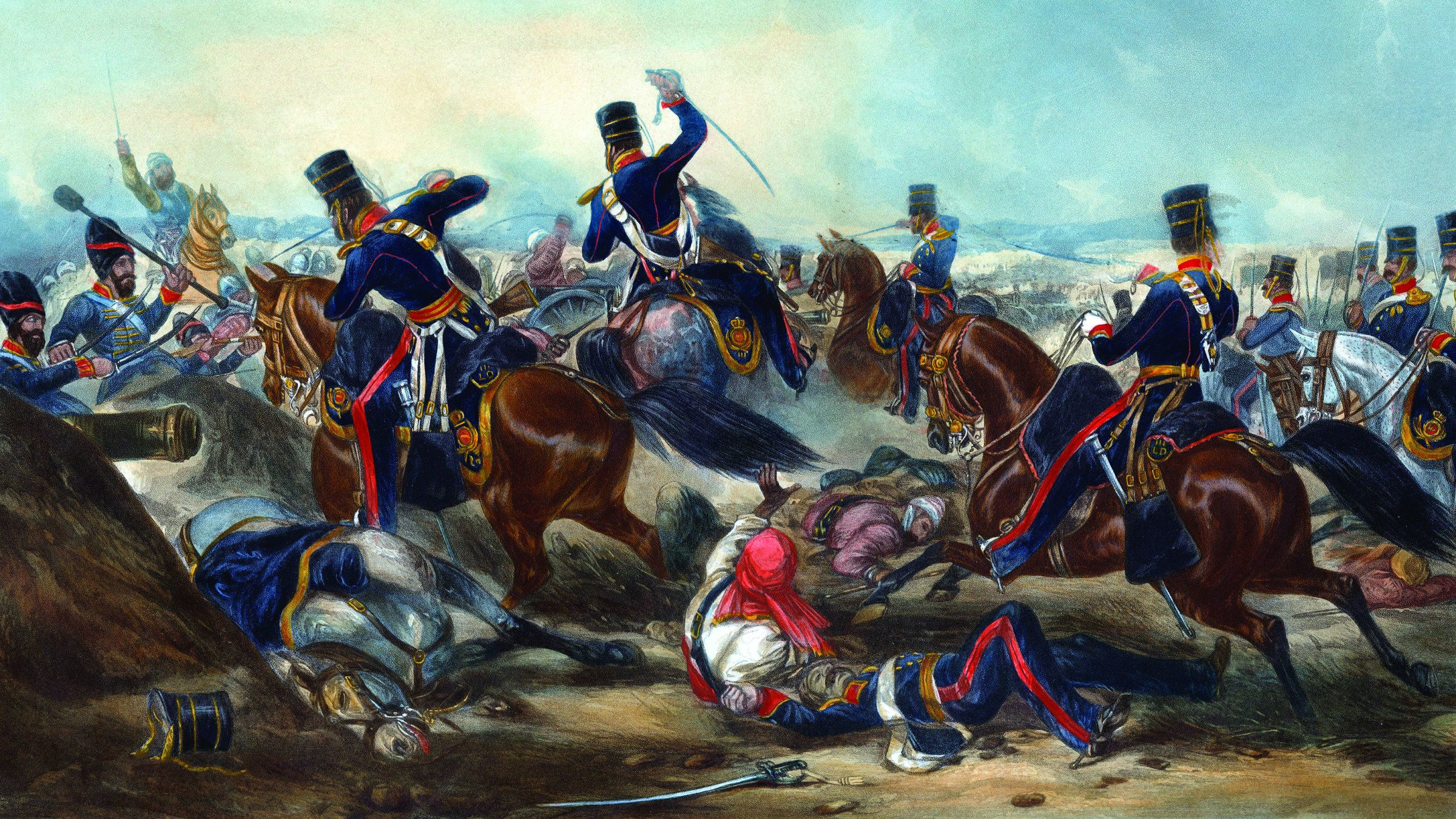
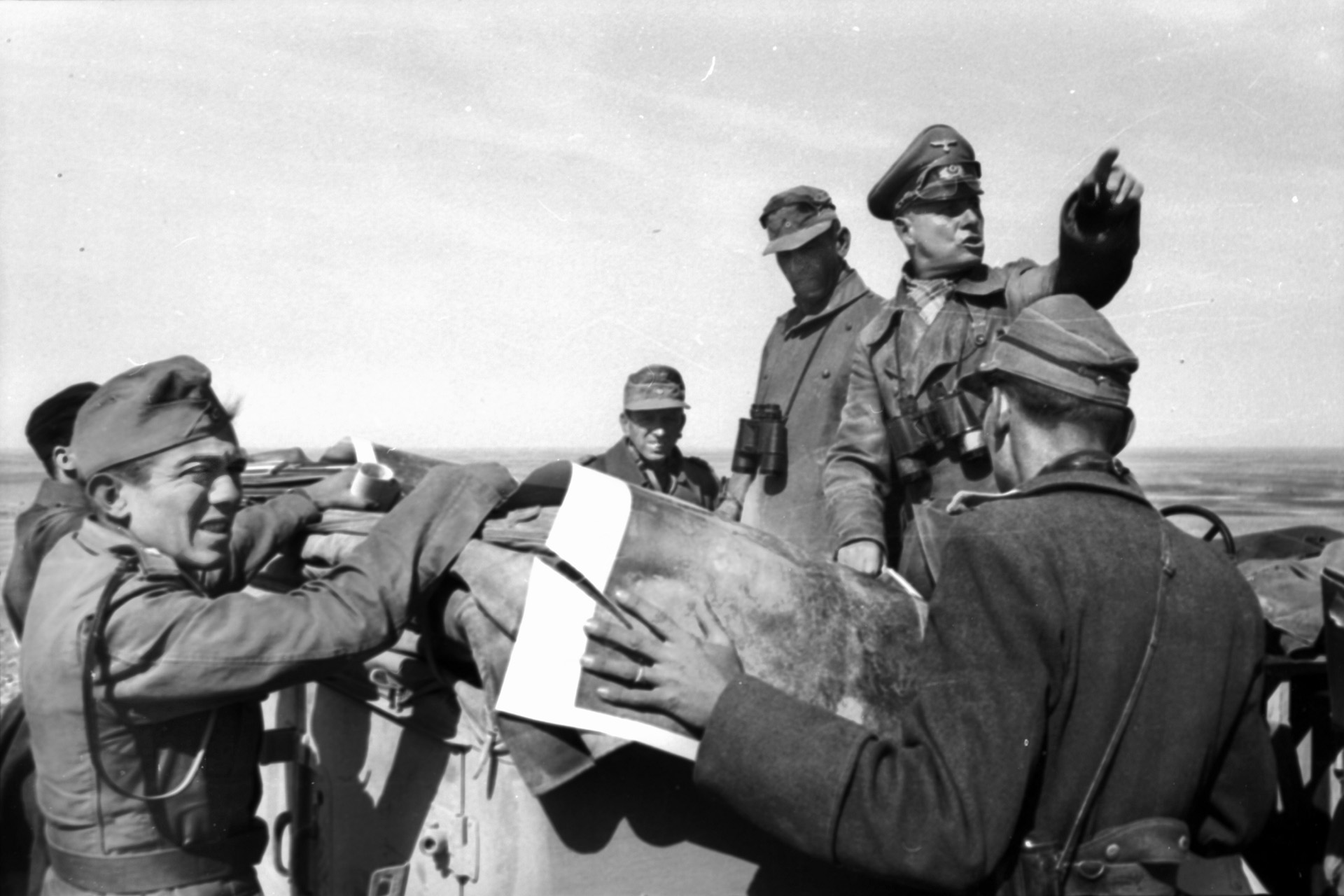
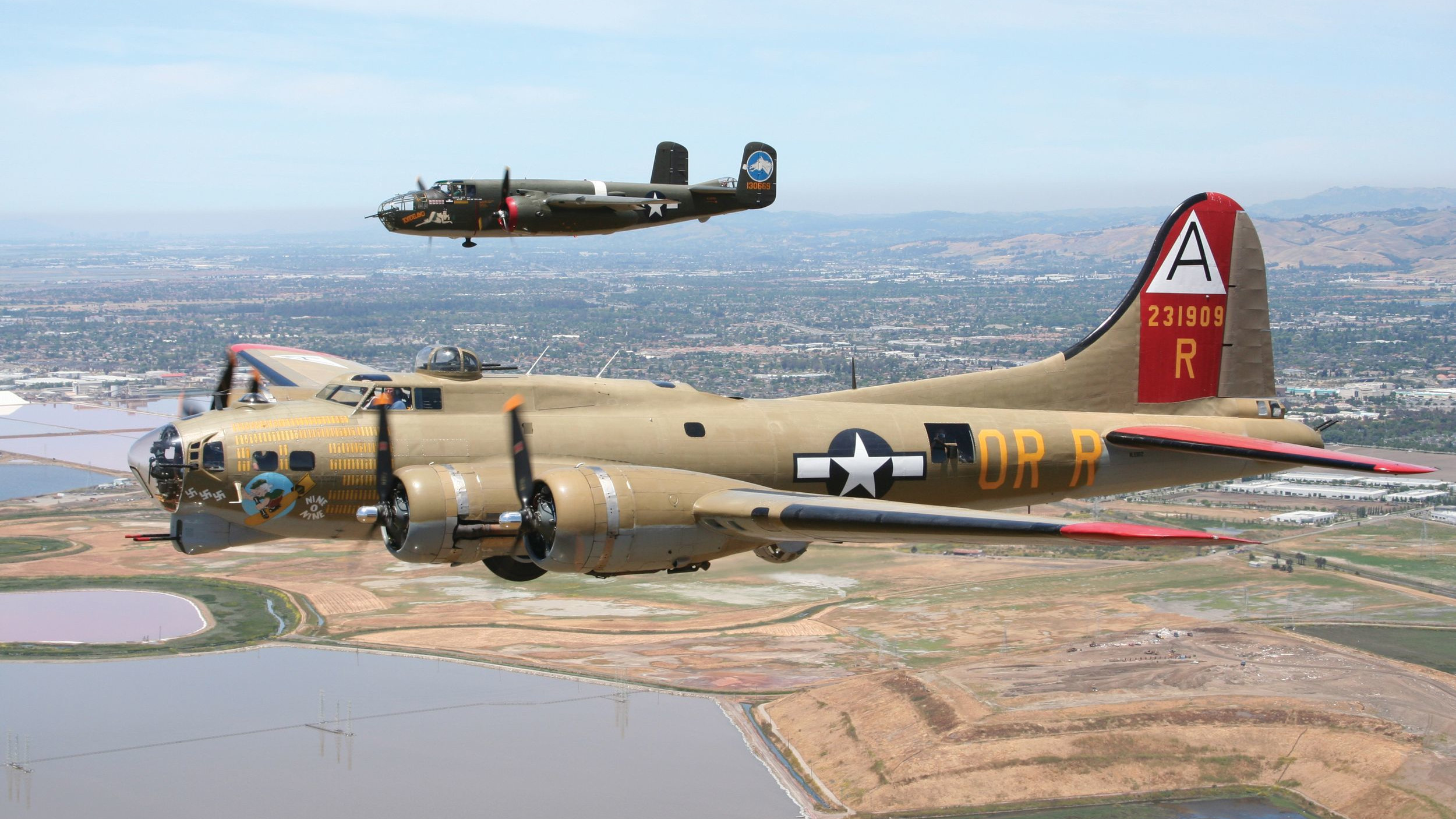
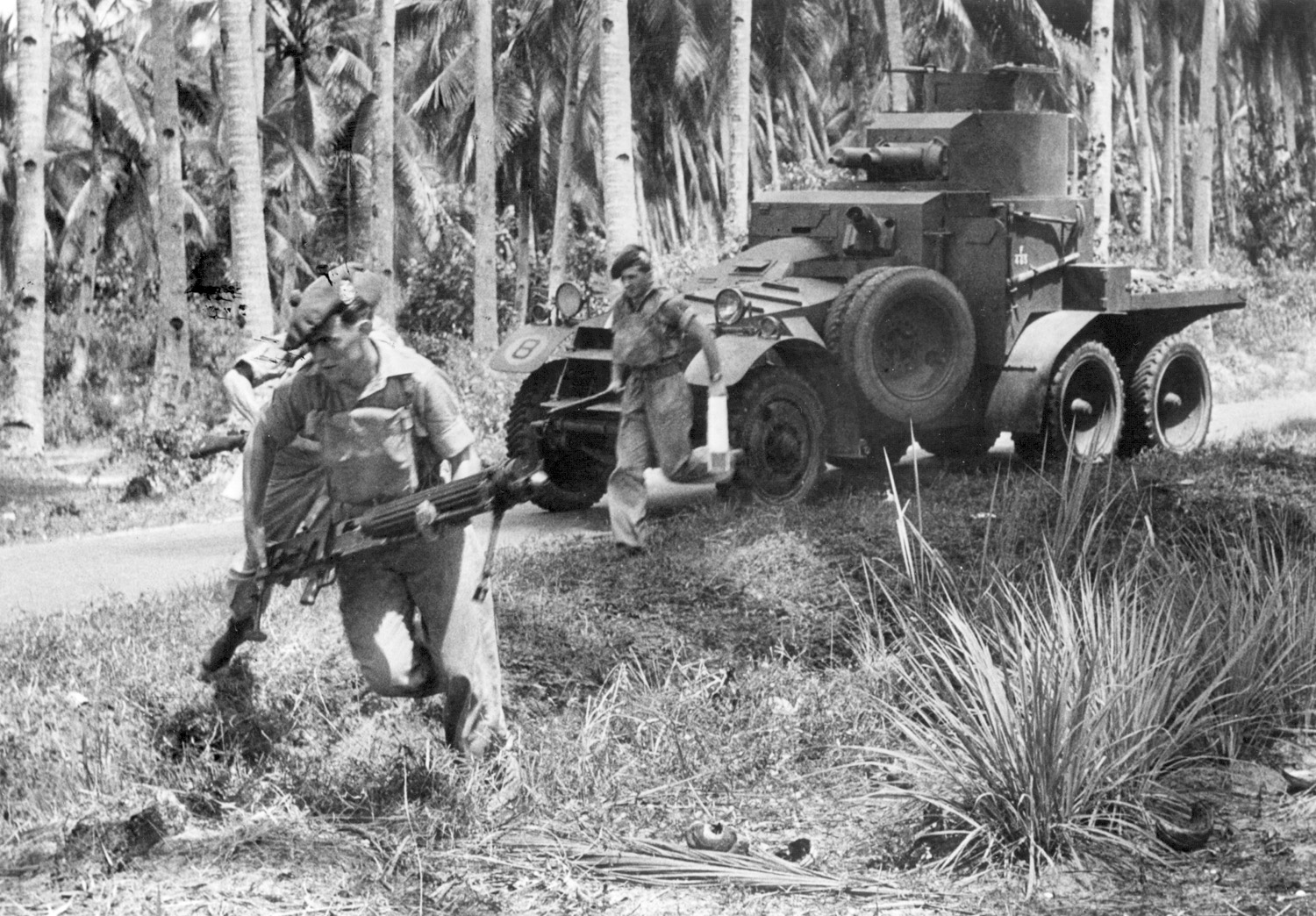
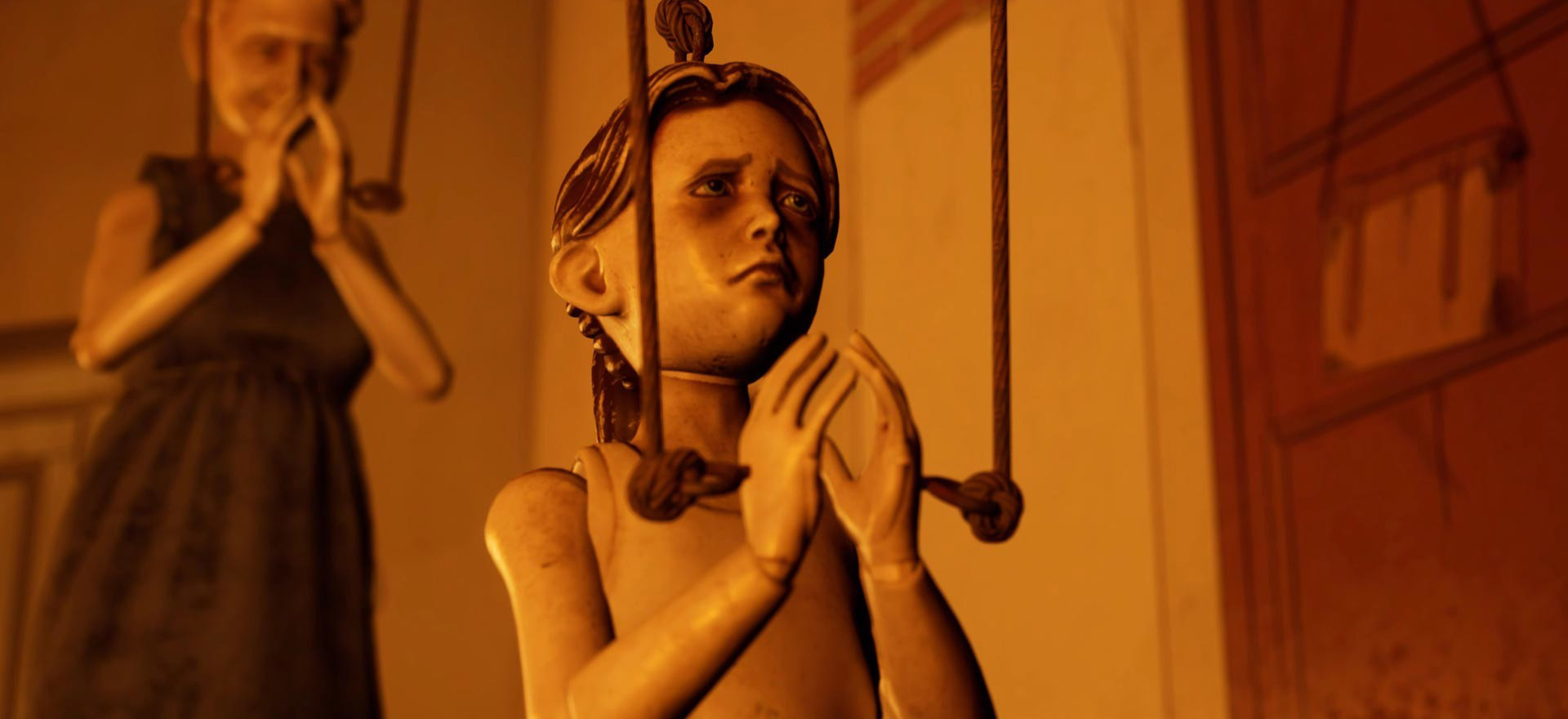
Join The Conversation
Comments
View All Comments